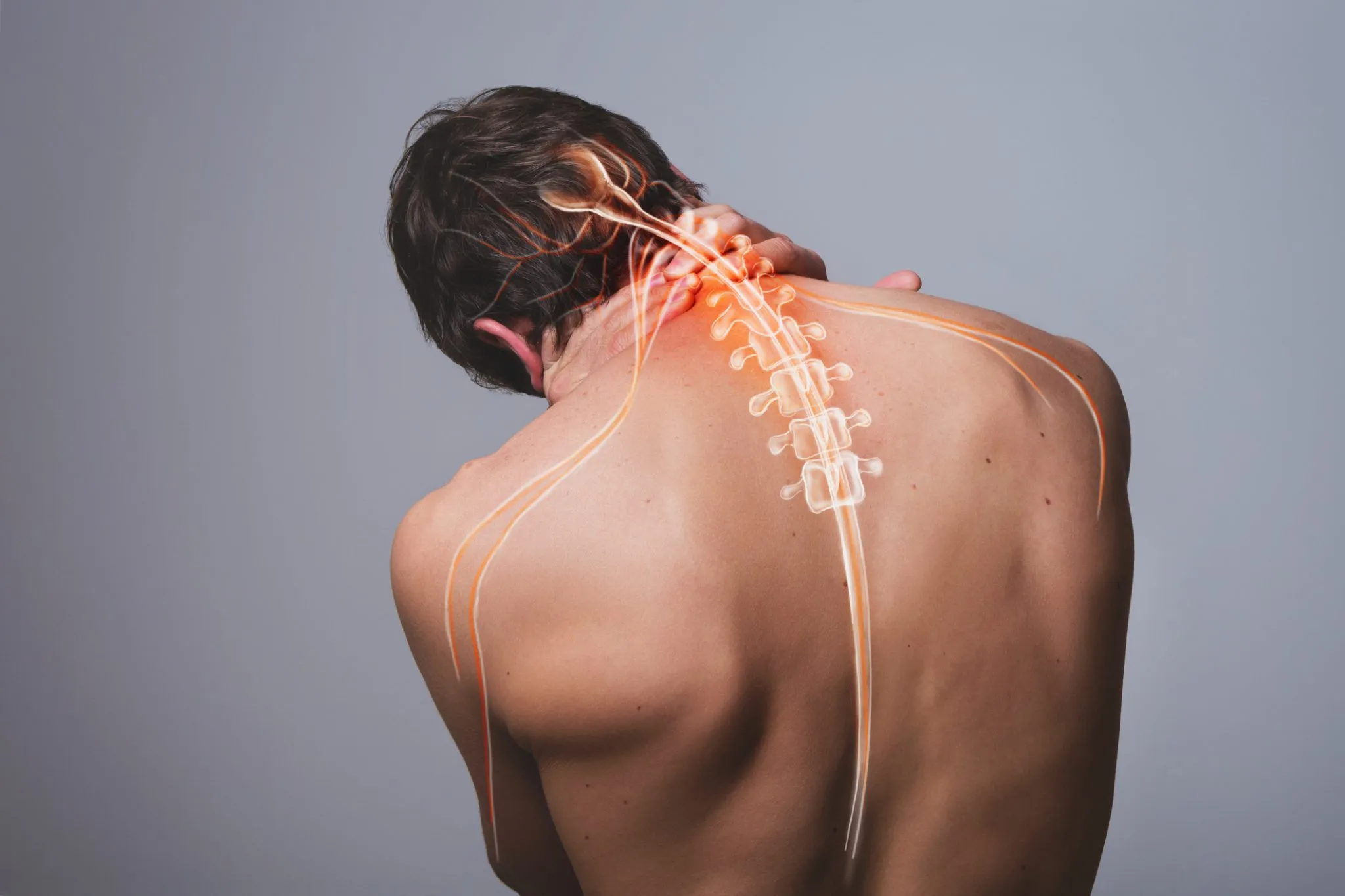If you’re experiencing shooting pain, numbness, or tingling that radiates from your neck down into your arm and fingers, you may be dealing with cervical radiculopathy. This condition affects millions of people worldwide, often causing debilitating symptoms that interfere with work, sleep, and daily activities. While traditional treatments like medications and physical therapy can provide some relief, many patients find themselves searching for more effective solutions.
At our clinic, we’ve seen remarkable success treating cervical radiculopathy with dry needling, a specialized technique that targets the root cause of nerve compression and muscular dysfunction. Unlike conventional approaches that often focus solely on symptom management, dry needling addresses the underlying mechanical issues contributing to your pain. This evidence-based treatment has helped countless patients regain their quality of life and return to activities they once enjoyed.
In this comprehensive guide, we’ll explore how dry needling can effectively treat cervical radiculopathy, what you can expect during treatment, and why this approach often succeeds where other methods fall short. Whether you’re considering dry needling for the first time or looking to understand how it might fit into your overall treatment plan, this article will provide you with the essential information you need to make informed decisions about your care.
Understanding Cervical Radiculopathy
Cervical radiculopathy occurs when a nerve root in the cervical spine becomes compressed or irritated, typically between the C5 and C8 vertebrae. This compression can result from various factors, including herniated discs, bone spurs, spinal stenosis, or muscular tension that creates pressure on the nerve pathways. The condition is particularly common in adults between 40 and 60 years old, though it can affect individuals of any age.
The symptoms of cervical radiculopathy extend far beyond simple neck pain. Patients often experience sharp, shooting pain that follows the path of the affected nerve root, traveling from the neck through the shoulder, arm, and sometimes into the hand and fingers. Numbness and tingling are equally common, along with muscle weakness that can make gripping objects or performing fine motor tasks challenging. Many patients also report that their symptoms worsen with certain neck movements or positions, particularly when looking up or turning their head.
What makes cervical radiculopathy particularly frustrating is how it impacts daily life. Simple activities like driving, working at a computer, or even sleeping can become sources of significant discomfort. The pain often intensifies at night, leading to sleep disturbances that compound the problem by preventing proper healing and recovery.
Traditional treatment approaches typically involve anti-inflammatory medications, muscle relaxants, and physical therapy focused on stretching and strengthening exercises. While these methods can provide temporary relief, they often fail to address the deeper muscular imbalances and trigger points that contribute to nerve compression. This is where dry needling for nerve pain offers a more targeted and effective solution.
How Dry Needling Addresses Cervical Radiculopathy
Dry needling works by targeting specific trigger points and motor points within the muscles that contribute to cervical radiculopathy. When we insert fine needles into these precise locations, we create a controlled stimulus that promotes several beneficial physiological responses. The needle insertion triggers a local twitch response in the muscle fibers, which helps reset the muscle’s normal length and tension patterns.
The primary mechanism involves releasing chronic muscle tension that often develops around the cervical spine. Muscles like the upper trapezius, levator scapulae, scalenes, and deep cervical flexors frequently become hypertonic and develop trigger points in response to poor posture, stress, or previous injuries. These tight muscles can compress nerve roots either directly or indirectly by altering the normal biomechanics of the cervical spine.
We focus our dry needling treatment on several key muscle groups that commonly contribute to cervical radiculopathy. The scalene muscles, located on the sides of the neck, are particularly important because they can compress the brachial plexus and create symptoms that mimic cervical radiculopathy. The upper trapezius and levator scapulae often harbor trigger points that refer pain into the shoulder and arm, mimicking or exacerbating radicular symptoms.
The deep cervical muscles, including the multifidi and rotatores, play a crucial role in spinal stability and positioning. When these muscles become dysfunctional, they can alter the normal spacing between vertebrae and contribute to nerve root compression. Our dry needling for neck pain approach specifically targets these deeper layers of muscle tissue that are often difficult to reach with traditional manual therapy techniques.
Beyond muscle release, dry needling promotes increased blood flow to the treated areas, which enhances the delivery of oxygen and nutrients while facilitating the removal of inflammatory byproducts. This improved circulation creates an optimal environment for tissue healing and nerve recovery. The treatment also appears to modulate pain signals at the spinal cord level, providing both immediate and long-term pain relief.
The Treatment Process
Our approach to treating cervical radiculopathy with dry needling begins with a comprehensive assessment using our specialized EXSTORE system. This evaluation helps us identify not just the obvious areas of muscle tension, but also the subtle compensatory patterns that may be contributing to your symptoms. We examine your posture, range of motion, and muscle activation patterns to develop a complete picture of how your cervical spine is functioning.
During the assessment, we perform specific orthopedic tests to differentiate between true cervical radiculopathy and other conditions that can cause similar symptoms. We also evaluate the strength and coordination of muscles throughout your neck, shoulder, and arm to identify areas of weakness or inhibition that may be contributing to the problem. This thorough evaluation ensures that our dry needling treatment is precisely targeted to address your specific needs.
The actual dry needling procedure involves inserting thin, sterile needles into identified trigger points and motor points within the affected muscles. Most patients are surprised by how comfortable the treatment is – while you may feel a brief pinch when the needle is inserted, this quickly subsides. The most notable sensation is often the muscle twitch response, which feels like a quick, involuntary contraction followed by immediate relaxation.
We typically begin with the more superficial muscles before progressing to deeper layers, allowing your nervous system to adapt gradually to the treatment. Each needle is left in place for several minutes while we work on other areas, and we may apply gentle manipulation to enhance the release response. The entire treatment session usually lasts between 30 to 45 minutes, depending on the number of areas we need to address.
Most patients notice some improvement in their symptoms immediately following treatment, though it’s common to experience mild soreness similar to what you might feel after a workout. This post-treatment soreness typically resolves within 24 to 48 hours and often coincides with significant improvement in your original symptoms. We usually recommend a series of treatments spaced one to two weeks apart, with most patients experiencing substantial improvement within four to six sessions.
Clinical Evidence and Effectiveness
Research into dry needling for cervical radiculopathy has shown consistently positive outcomes, with studies demonstrating significant improvements in pain levels, functional capacity, and overall quality of life. Clinical trials have found that patients receiving dry needling treatment typically experience faster recovery times compared to those receiving conventional physical therapy alone.
One of the most compelling aspects of the research is the durability of results. Studies following patients for several months after treatment show that the benefits of dry needling tend to persist, suggesting that the technique creates lasting changes in muscle function and pain processing. This is particularly important for cervical radiculopathy, which has a tendency to recur if underlying muscular imbalances aren’t properly addressed.
Success rates for dry needling in treating cervical radiculopathy vary depending on the specific criteria used, but most studies report significant improvement in 70-80% of patients. Factors that tend to predict better outcomes include shorter symptom duration, younger age, and the presence of clear muscular trigger points. However, we’ve seen excellent results even in patients with chronic symptoms who had previously failed to respond to other treatments.
Patient-reported outcomes consistently show improvements not just in pain levels, but also in functional measures like neck range of motion, arm strength, and ability to perform daily activities. Many patients report sleeping better and experiencing less anxiety about their symptoms, which speaks to the comprehensive nature of the improvement that dry needling can provide.
The treatment appears to be particularly effective for cases where muscular dysfunction is a primary contributing factor, which represents a significant percentage of cervical radiculopathy cases. Even when disc herniation or bone spurs are present, addressing the muscular component often provides substantial relief by reducing the overall stress on the affected nerve roots.
Combining Dry Needling with Other Therapies
While dry needling can be highly effective as a standalone treatment, we often achieve the best results when it’s integrated with other therapeutic approaches. Our comprehensive treatment philosophy recognizes that cervical radiculopathy often involves multiple contributing factors that require a multi-modal approach to address effectively.
Electrostimulation can be particularly beneficial when combined with dry needling, as it helps maintain the muscle relaxation achieved through needle treatment while promoting continued healing. We may also incorporate cupping therapy to enhance blood flow and facilitate the removal of metabolic waste products from the treated tissues.
For patients with significant postural imbalances or movement dysfunction, we often recommend corrective exercise programming following the initial series of dry needling treatments. This helps address the underlying biomechanical issues that may have contributed to the development of cervical radiculopathy and reduces the likelihood of recurrence.
Conclusion
Dry needling offers a highly effective, evidence-based approach to treating cervical radiculopathy by addressing the muscular dysfunction that often underlies this challenging condition. Through precise targeting of trigger points and motor points, we can help restore normal muscle function, reduce nerve compression, and provide lasting relief from your symptoms.
If you’re struggling with cervical radiculopathy and looking for a comprehensive treatment approach, we invite you to discover how Lycoming Orthopedic & Sports Acupuncture can help you regain your quality of life. Our experienced team specializes in dry needling and orthopedic acupuncture techniques that target the root causes of your pain. Don’t let cervical radiculopathy control your life – contact us today to schedule your comprehensive evaluation and take the first step toward lasting relief.





